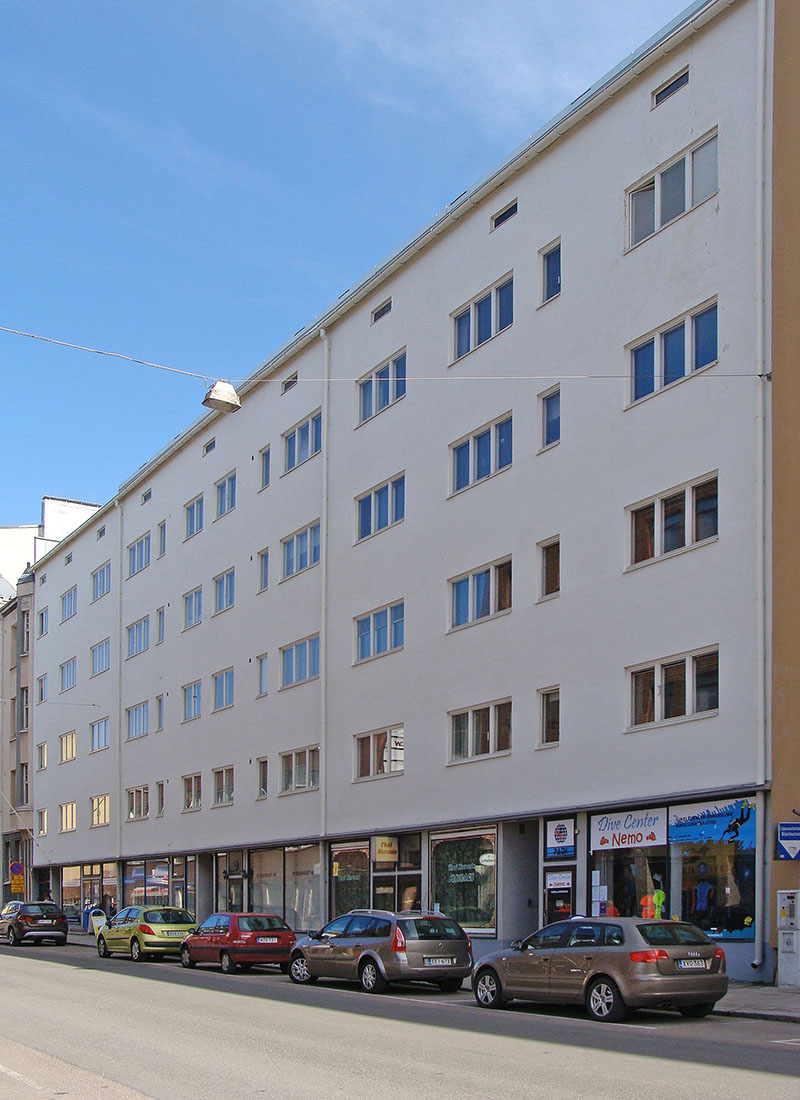 |
 |
 |
 |


Tapani Apartment Building
Läntinen Pitkäkatu 20, Turku
1927 - 1929
The Tapani Apartment Building from 1927 clearly shows Alvar Aalto's interest into the International Rationalism. The design for this building was commissioned by Juho Tapani of the Tapani construction firm. This company became known for manufacturing standard precast concrete units, such as beams and wall units. All those standard concrete parts were hollow, to facilitate the installation of pipes, electrical wiring and air ducts.
On the ground floor the Tapani Building contains shops opening onto the street. Three stairways with elevators give access to the five residential floors. This building refers to Ludwig Mies van der Rohe's Building at Stuttgart's Weissenhof exhibition (1927), sharing with it the structural principle of transverse bearing walls between non-load-bearing facades. This layout allows for a flexible variation of secondary walls and windows, enabling the set up of varied apartment sizes. These vary from studios to three-room apartments with kitchen and servant's room. Another remarkable feature of the building were some apartments with a living room, which was to be partitioned in various ways. On completion of the building in 1929, Alvar Aalto furnished one of the flats with standard furniture, some of it designed by Aino Aalto and others made by the famous Thonet company. This furnished apartment was showed to the public during the Turku 700th anniversary exhibition.